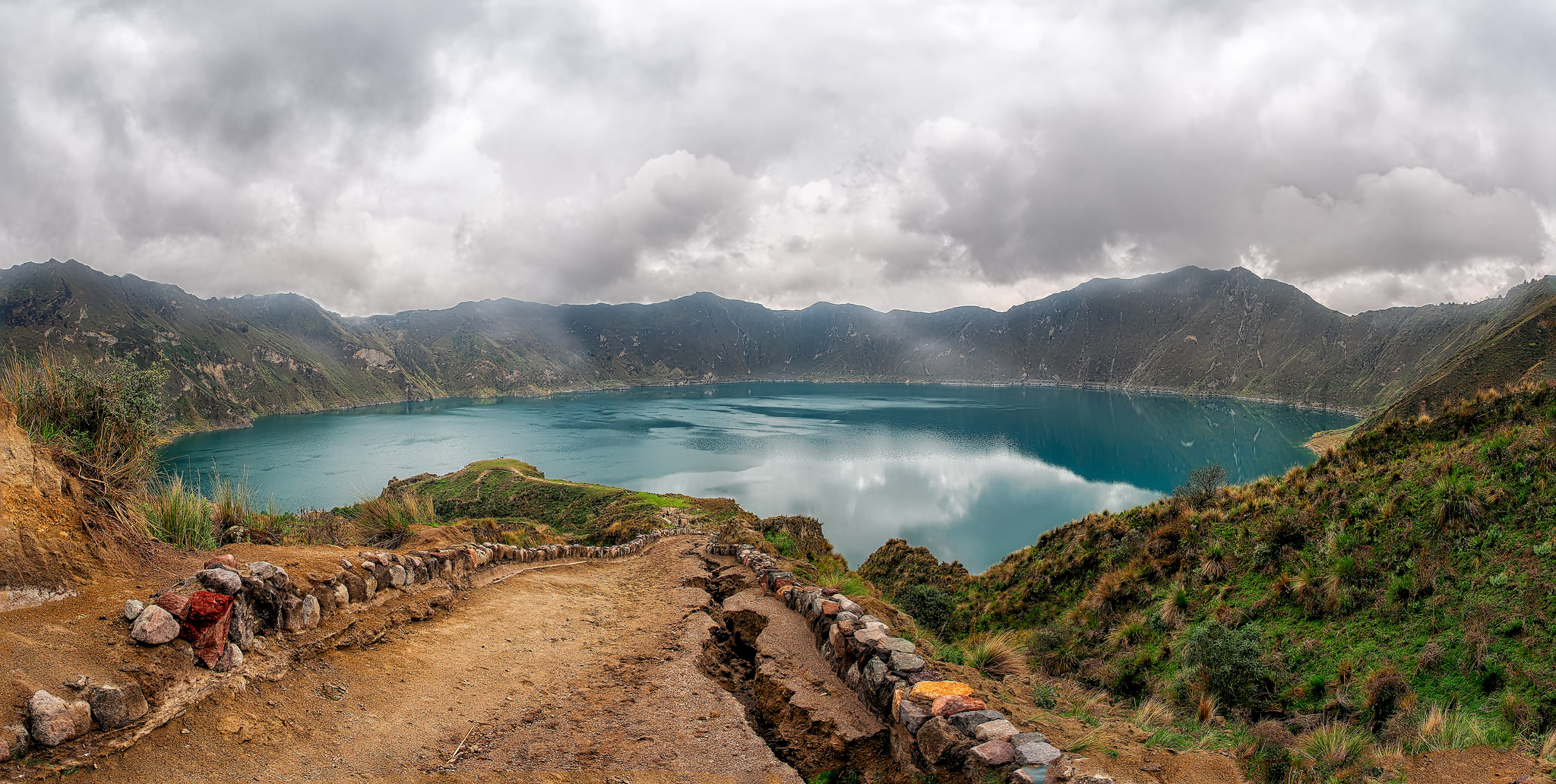Everything you need to know before hiking the Quilotoa loop

If any of you are thinking of having an adventure in Ecuador – Make sure you don’t miss out on hiking the Quilotoa loop. It’s one of the must visit places in Ecuador, and the longer you take, the more you will understand why.
Travelers can make the trip in a day or two weeks – depends on how adventurous your spirit is. The most popular route begins in Chugchillan and ends at the crater lake.


Quilotoa is a water-filled caldera in the Ecuadorian Andes. It is a 2-mile wide caldera that was created during the collapse of dacite volcano 800 years ago when the catastrophic VEI-6 eruption happened. The caldera is now a 820 ft deep crater lake with a notable greenish color which is a result of dissolved minerals. At the lake floor, fumaroles can cozy, while on the eastern flank of the volcano there are hot springs.



The little town of Quilotoa can be reached by bus or a hired truck from the town of Zumbahua, which is 17 km to the South. However, it is generally more popular to hike from one village to another before arriving at the town. The approximate distance between the villages is 15 kilometers, hiking will take you up 600 meters a day.
On the way to the crater lake it’s an enjoyable hike through the Andean hills, valleys, and rivers. It’s great to meet the Quechua communities, amazing farm animals, and relaxing in the vast countryside.



The Nature here is astonishing and the landscapes are epic, while the hostels are warm, cozy, and welcoming. If you decide to hike but do not want to spent all of your holiday on it, five days might be perfect length for the hike. The first day, you should get to Sigchos which is a village that can be reached by bus from Latacunga.
Then, you hike from Sigchos to Insinlivi where you can spend the night in a hostel. During the second day, the distance between the villages of Insinlivi and Chugchilan can be hiked. You can spend the night in Chughilan and if the next day is a Monday, you might want to give it another day just to visit the animal market there.




Regardless if you do or don’t stay in Chugchilan, you will have to hike the area around it to get to Quilotoa. It’s a hike that you should do early in the morning so that you can reach the town of Quilotoa before it gets dark. Even though it is not the most comfortable one, in Quilotoa you can find a hostel for $10 a bed with breakfast and dinner included so it’s great value.
Early in the morning, you will reach your final destination – the crater lake. You can hike it down and back up in the day and if you have time, you should take a bus to Tigua to see the paintings of Andean life before returning to Latacunga.




As is often the case, there are few things that you should beware of before hiking the trail. First of all, the weather – it can get so cold in the evening that you find yourself wearing all the clothes you have with you, so make sure that you bring the right hiking clothes, remember to plan for layering your clothes so you can adjust them easily. Second, you will experience life without an internet connection. So, don’t ask for the wi-fi password in the hostels or restaurants you visit because they will think you’re an alien. Who know’s you might discover as others have that you much prefer being offline.



There are a few different routes that you can take to see the Quilotoa lake and each one is as amazing as the others. It is almost impossible not to get lost, so make sure you start your hiking routes early in the morning each day. If you decide to start your trip in Latacunga, then leave the luggage you won’t need while hiking. Almost everywhere you go in Ecuador, regardless if you hike or you just visit Quito, you will need a few days to adapt to the altitude, so no worries if you feel a bit “funny” on the way, everyone does.
If you just want to see the crater and don’t enjoy hiking, there are also shorter bus routes that you can make from almost any of the villages to the town of Quilotoa. However, there is no direct transportation to the lake, so you will have to hike for a bit, so be perpared.

It is a place worth visiting, so no matter which route you take, try not to miss the Quilotoa lake.
If you have any comments then please drop us a message on our Outdoor Revival Facebook page
If you have a good story to tell or blog let us know about it on our FB page, we’re also happy for article or review submissions, we’d love to hear from you.
We live in a beautiful world, get out there and enjoy it.
Outdoor Revival – Reconnecting us all with the Outdoor
